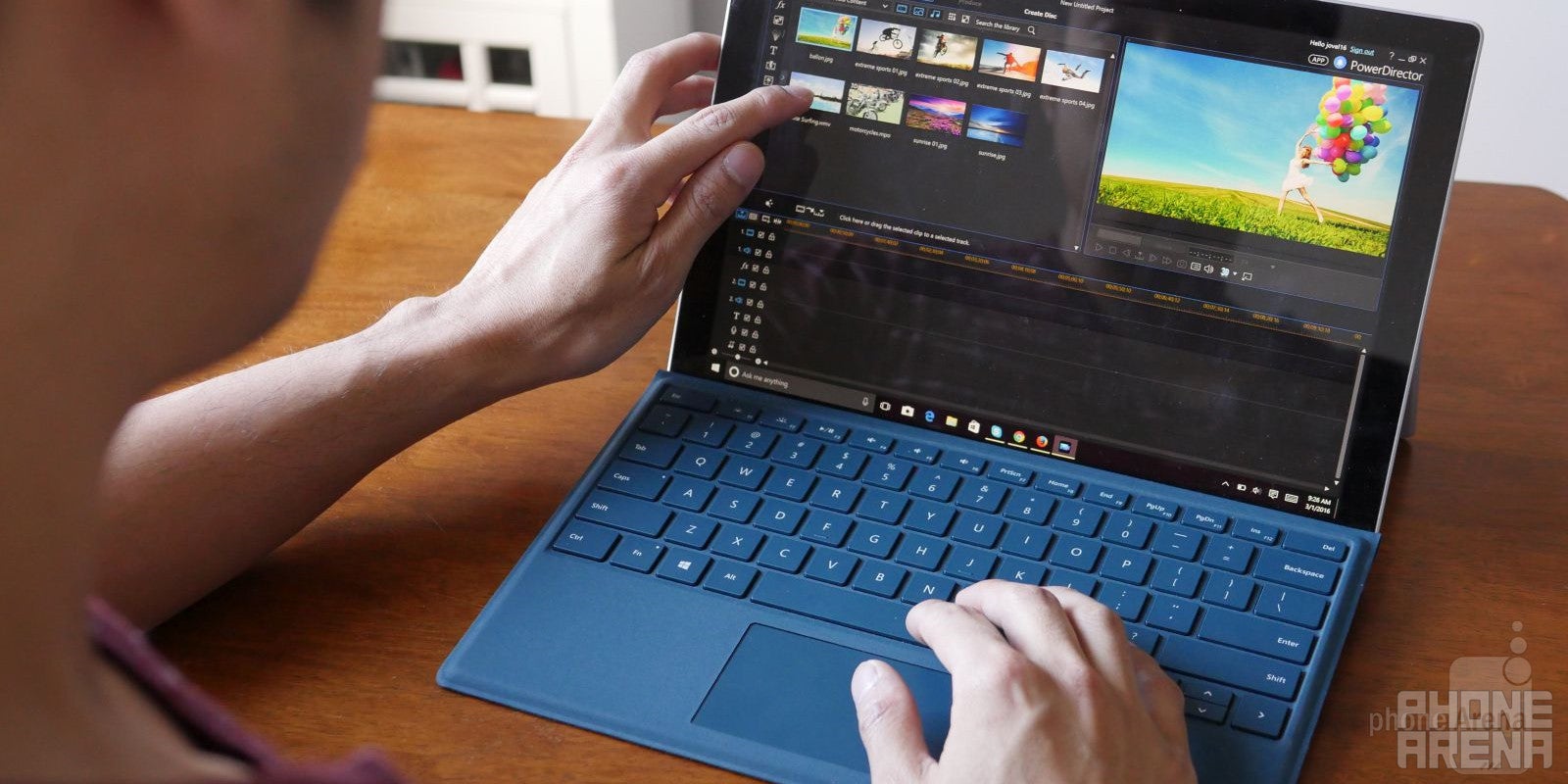Living with the Microsoft Surface Pro 4: The best tablet-laptop hybrid around
This article may contain personal views and opinion from the author.

Mobile World Congress 2016 has come and gone, leaving a wake of awesome smartphones behind it. Lots of work was put into covering all the cool smartphones and mobile stuff announced at the show, but behind the scenes, Microsoft’s latest tablet undeniably helped me to crank out some serious coverage – not only for editing videos on the fly, but also in keeping my spine’s curvature in place. Tradeshows are no joke, especially when you’re having to lug around all your gear from one place to another.
For mobile’s biggest show, I decided to travel as light as possible, so rather than bringing along my trusty Asus ultrabook that I’ve used for the last few tradeshows, I opted to go with sleeker, more compact sized Microsoft Surface Pro 4. Size alone, there’s a vast discrepancy between the two – whereby the Surface Pro 4 gets the upper hand. While some colleagues of mine were skeptical about this decision, especially when work consists of heavy video editing and rendering, I was actually far more impressed by how well the Surface Pro 4 stacked up against my workload.
More than just media consumption

For everything else, however, they continue to pale in comparison to my ultrabook. And that, folks, is why I find the Microsoft Surface Pro 4 so impressively useful. It’s designed to be a tablet first and foremost, but it has the horsepower of a laptop – and that’s the recipe I’ve been looking for when it comes to traveling light. Now, just for some clarification, I’ve been using the entry-level version of the Surface Pro 4, which can be customized to fit the needs of some many users.
That entry-level model turns out to the $899 Intel Core m3 variant, which comes with 4GB of RAM and 128GB SSD. Indeed, the price is more than the other ‘premium’ tablets, but its versatility goes nicely to justify its higher cost. And the cost even includes the Surface Pen, which of course, adds yet another layer of depth to what it has to offer. Still, for those who still prefer the laptop experience, the Surface Pro 4 offers that with the optional Type Cover, which will set you back another $129.99. We won’t lie, it’s a stiff cost for a detachable keyboard, but if you want that seamless integration, it’s the best solution.
Good enough for video editing, but not 4K editing
One of the main reasons I loved using the Microsoft Surface Pro 4 is because it handles video editing to my liking, unlike how some Atom-based things tend to crawl and bog down for the occasion. The Surface Pro 4, on the other hand, doesn’t lose its responsiveness when it comes to editing, trimming, adding special effects, and all the sorts of functions needed in getting a good video stitched together. It honestly works rather well, nearly as good of a performance to my ultrabook.
In fact, all the videos on our YouTube channel voiced by me were created using the Surface Pro 4 and CyberLink’s PowerDirector. The 1080p videos captured by my Panasonic Lumix GH4 were all able to play and render smoothly on the Surface Pro 4, but seeing that the GH4 is capable of shooting in 4K as well, I thought it’d be worth a shot to see how the Surface Pro 4 can handle them.
While 1080p videos pose no problems at all, 4K videos on the other hand, just prove to be too much for the Surface Pro 4. Playback isn’t an issue, however, things just begin to crawl the moment we throw in a 4K video into the timeline of our video editing software. You can forget about cropping, just because this Intel Core M variant just can’t handle the pressure – there’s just significant delay in its handling.
The only tablet that can truly double as a laptop
Apple’s new iPad Pro has been on this quest of bridging that gap between laptops and tablets, but people forget that Microsoft has already done it – for a long time even. The Microsoft Surface Pro 4, the 4th generation in the line, improves upon everything about its predecessor. From its upgraded hardware under the hood, to its even slimmer chassis, the Surface Pro 4 ensures that there’s no compromise in achieving that laptop performance, but in a tablet form factor.
Price wise, the $899 starting cost can definitely be perceived as exorbitant for those who are traditionally aware about these ‘premium’ $500 priced tablets. Those around that range are obviously media consuming tablets, with just a small pinch of productivity thrown into the mix. They simply don’t offer the customary software we’re used to using on our computers day in, day out. As much as some people will vouch otherwise, especially when word processing and spreadsheet apps are at their disposal, we all know that Windows 10 based devices just offer more of the stuff we need to get stuff done.
And that is exactly why I’ve chosen the Microsoft Surface Pro 4 as being my daily driver, for now, that is. It’s more than effective in dealing with the work I have to accomplish each and every day, while also sufficing for those downtime moments for media consumption. Sure, I might eventually start experimenting with 4K video, which this current configuration is unable to handle, but I presume that the better spec’d variants of the Surface Pro 4 will do better. Best of all, its compact size is a delightful treat I’ve been relishing because I’m no longer having to struggle lugging around my heavier and larger ultrabook.










Things that are NOT allowed: